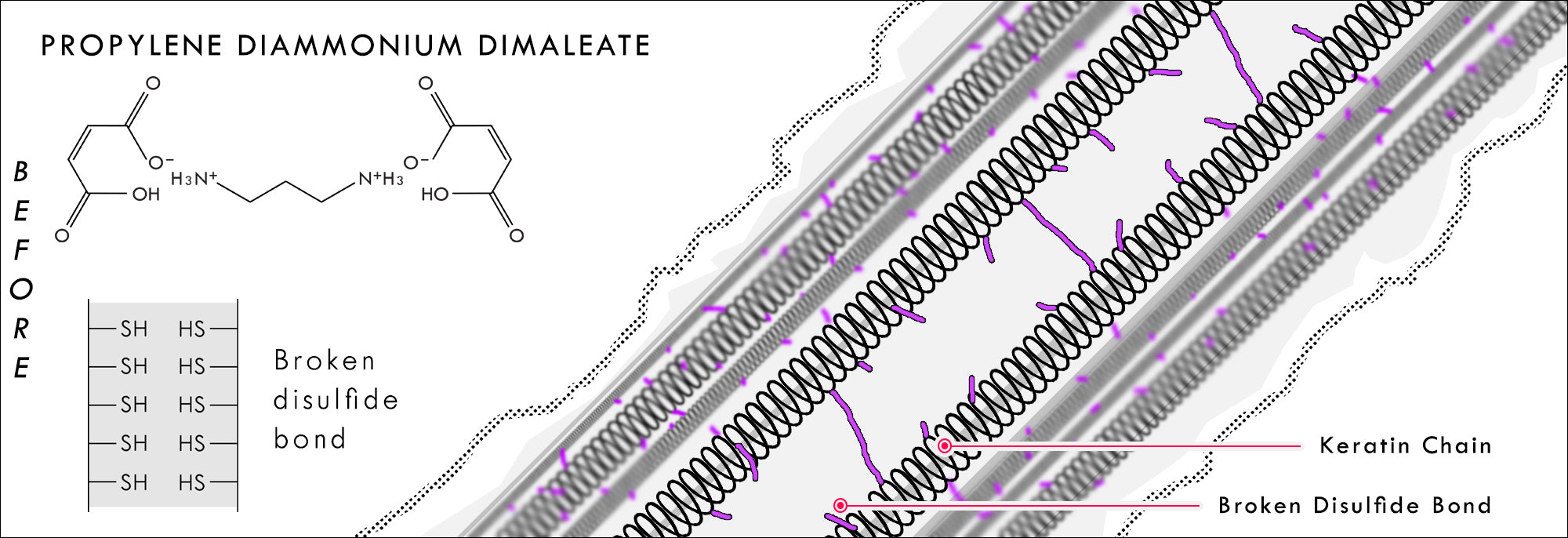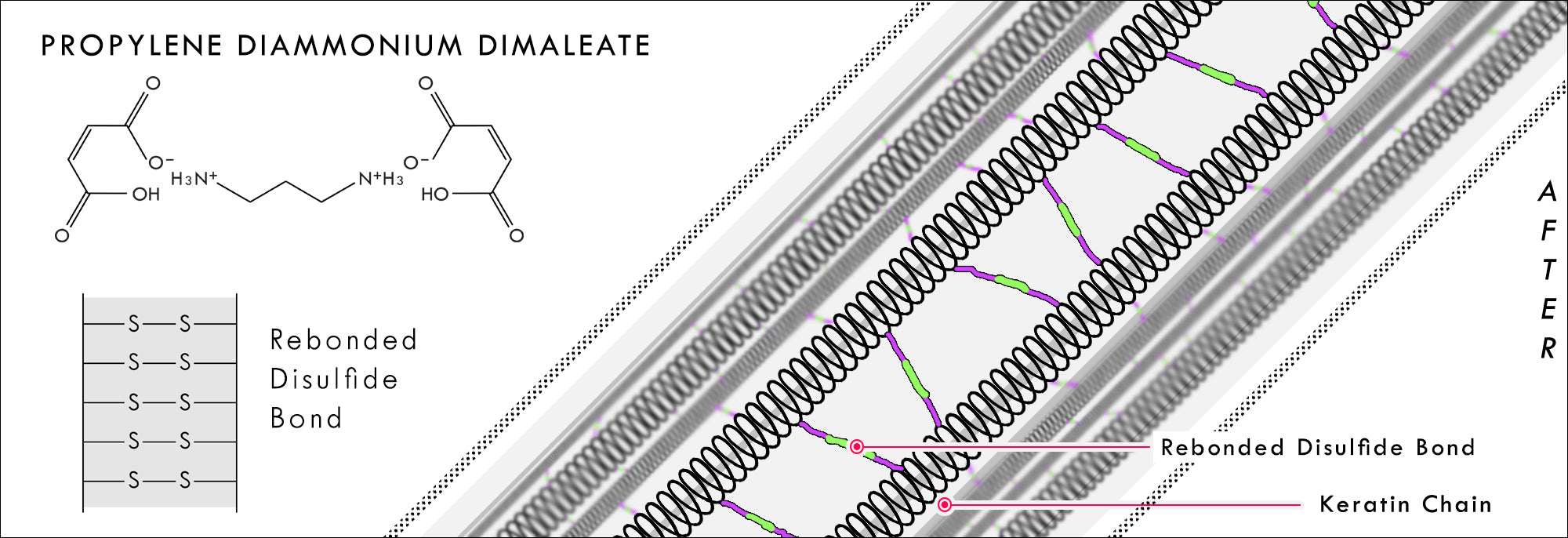HAIR REPAIR STARTS FROM THE INSIDE
Our ingredient penetrates the hair strand, reaching the inside of the hair strand to repair and reconnect the disulfide bond
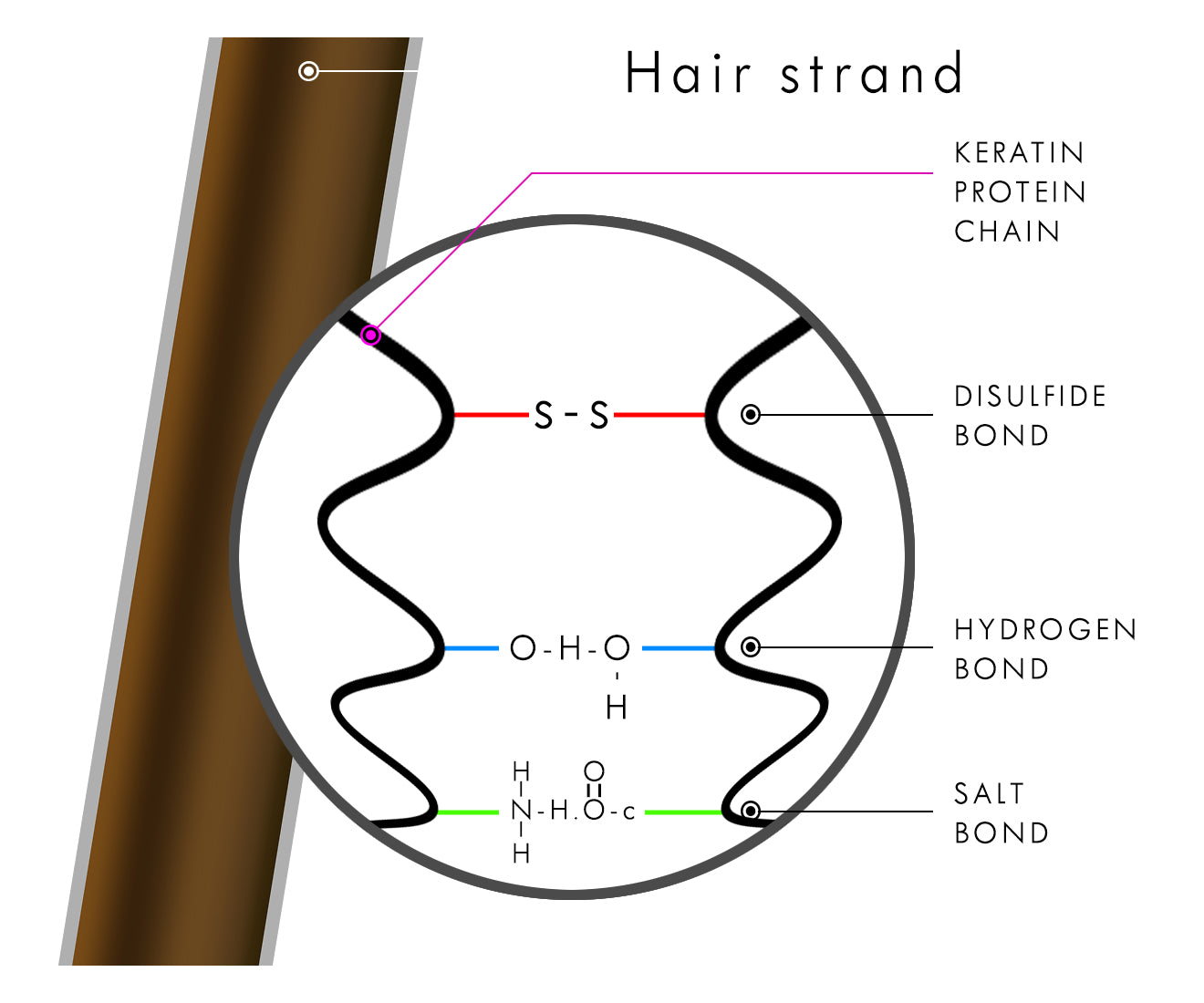
WHAT ARE HAIR BONDS?
Hair bonds refer to the structural elements that hold the proteins in your hair together. These bonds play a crucial role in determining the strength, elasticity, and overall health of your hair. There are three main types of hair bonds:
- Disulfide Bonds: These are the strongest type of hair bonds, formed by the chemical interaction between sulfur atoms in two different protein molecules. Disulfide bonds contribute to the overall strength and resilience of your hair.
- Hydrogen Bonds: Hydrogen bonds are temporary bonds formed between water molecules and the protein molecules in your hair. They are responsible for the temporary shape and structure of your hair, such as when you curl or straighten it using heat styling tools. These bonds can be easily broken and reformed with water and heat.
- Salt Bonds (Salt Bridges): Salt bonds are formed through the attraction between positive and negative charges in the amino acid chains of hair proteins. These bonds contribute to the hair's overall shape and stability.
Hair treatments, chemical processes like coloring or perming, and environmental factors like exposure to sunlight and heat can all affect these bonds.
HOW BONPLEX WORKS?
Learn about how our patended ingredients work and what benefits you can get from each ingredients and products.
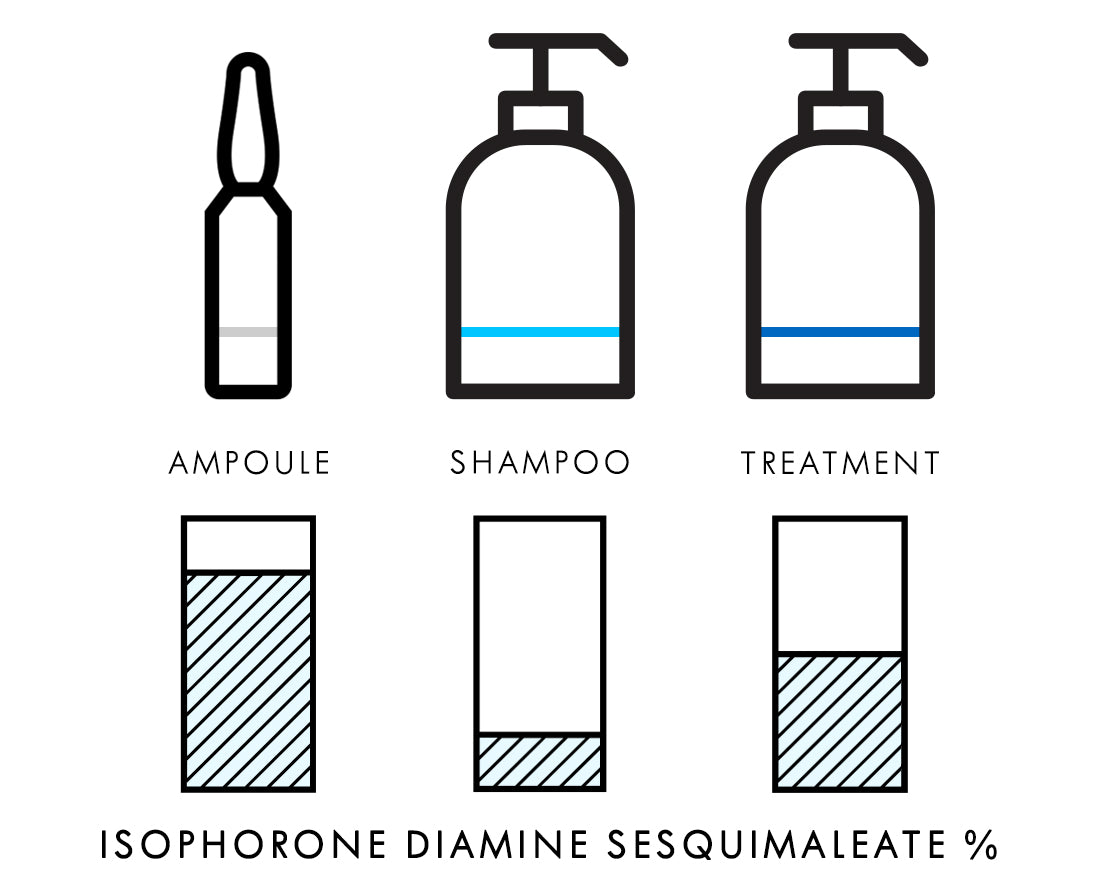
ISOPHORONE DIAMINE SESQUIMALEATE
- Commercially available bonding materials use Aliphatic Diamine as an intermediate bond, but Isophorone Diamine Sesquimaleate uses Aromatic Diamine, which is hydrophobic compared to the other bonding materials this allows for excellent softness and coating power, suitable for both shampoo and treatment (shampoo 0.5~1.5%, treatment 4.0%)
- Creates new disulfide bonds and repairs and maintains broken disulfide bonds from the damaged hair
For the reasons above, it creates an excellent softness and gloss compared to other bonding products.
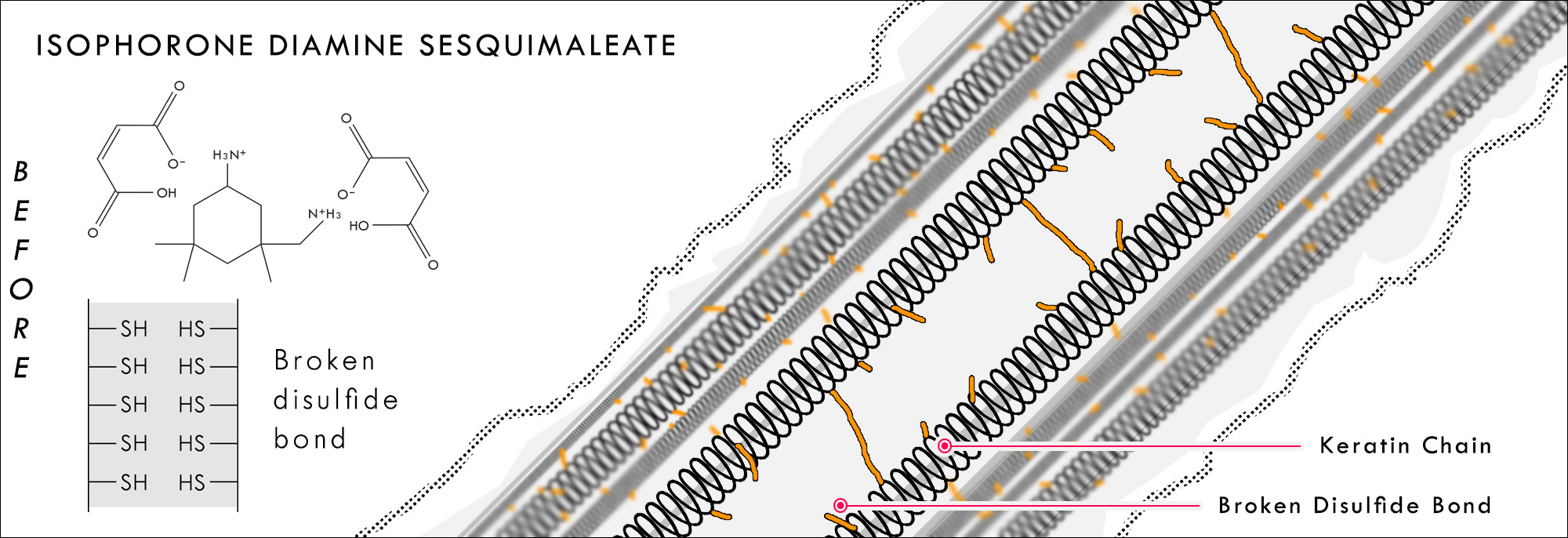
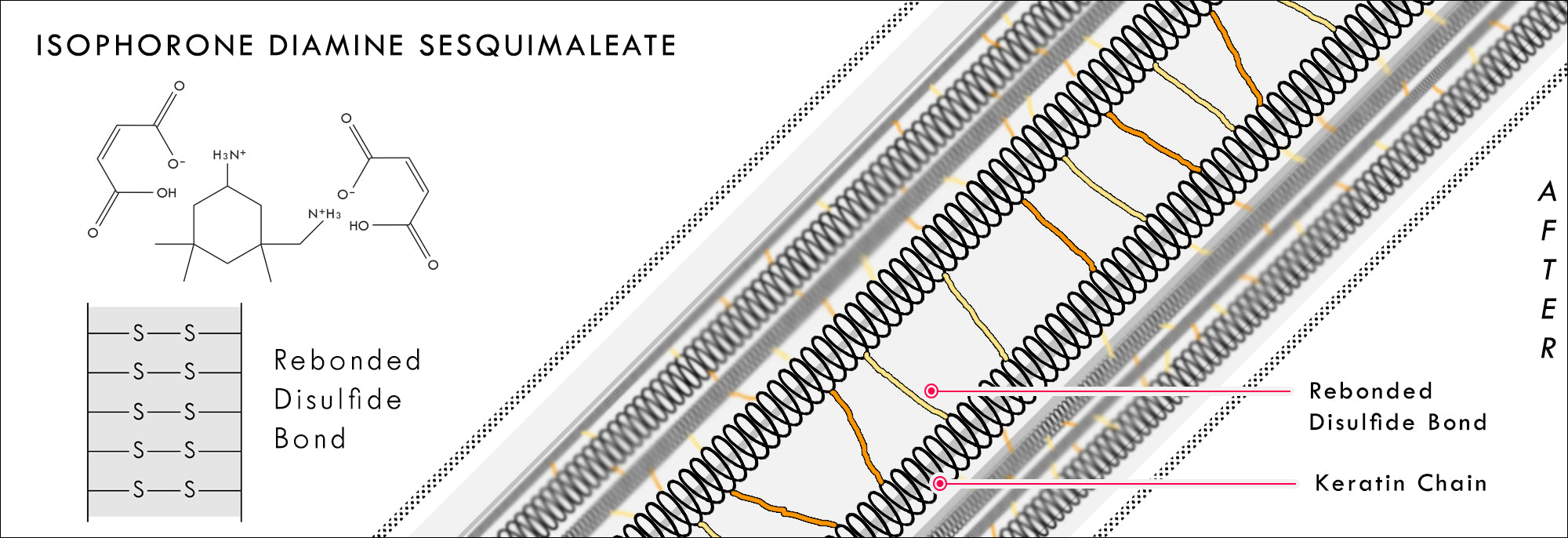
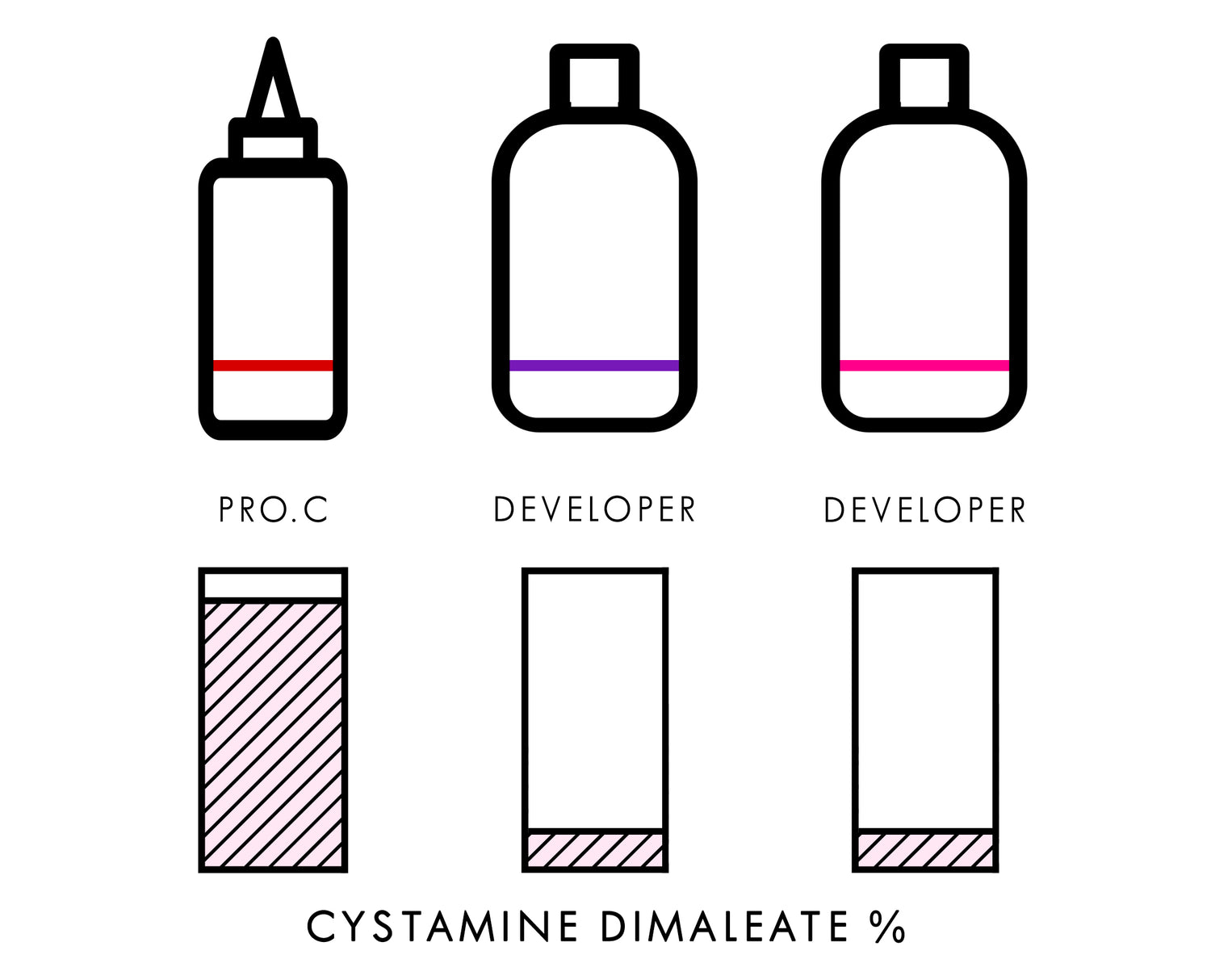
CYSTAMINE DIMALEATE
- Cystamine with -S-S- bond is used as an intermediate bonding ingredient which allows for the strongest hair recovery
Example: Other bonding product--> SR-RS > -S-S-
Cystamine Dimaleate --> SR-RS > -S-S-S-S- - When used as a developer agent for dyeing and bleaching (1.0%), it inhibits the generation of cysteic acid (-SO3H) by hydrogen peroxide, significantly reduces damage and stinging, and enables continuous bleaching procedures
- When dyeing, the degree of polymerization increases linearly with other bonding ingredients. However, three-dimensional polymerization occurs through unshared electron pairs in C, which exist at -S-S-. This results in much higher chroma, vivid color, and retention.
Cystamine Dimaleate adds an extra disulfide bond, resulting in enhanced repair through stronger bonds, thereby enabling a greater bleaching tone and yielding more vibrant color outcomes.
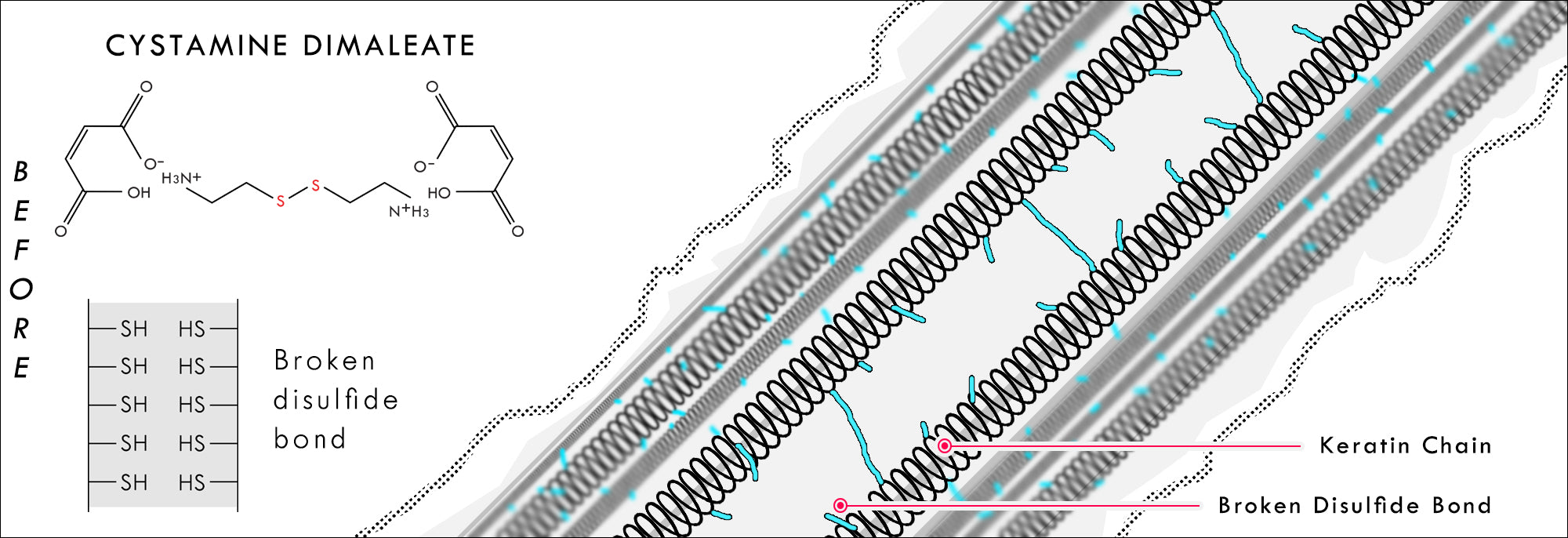
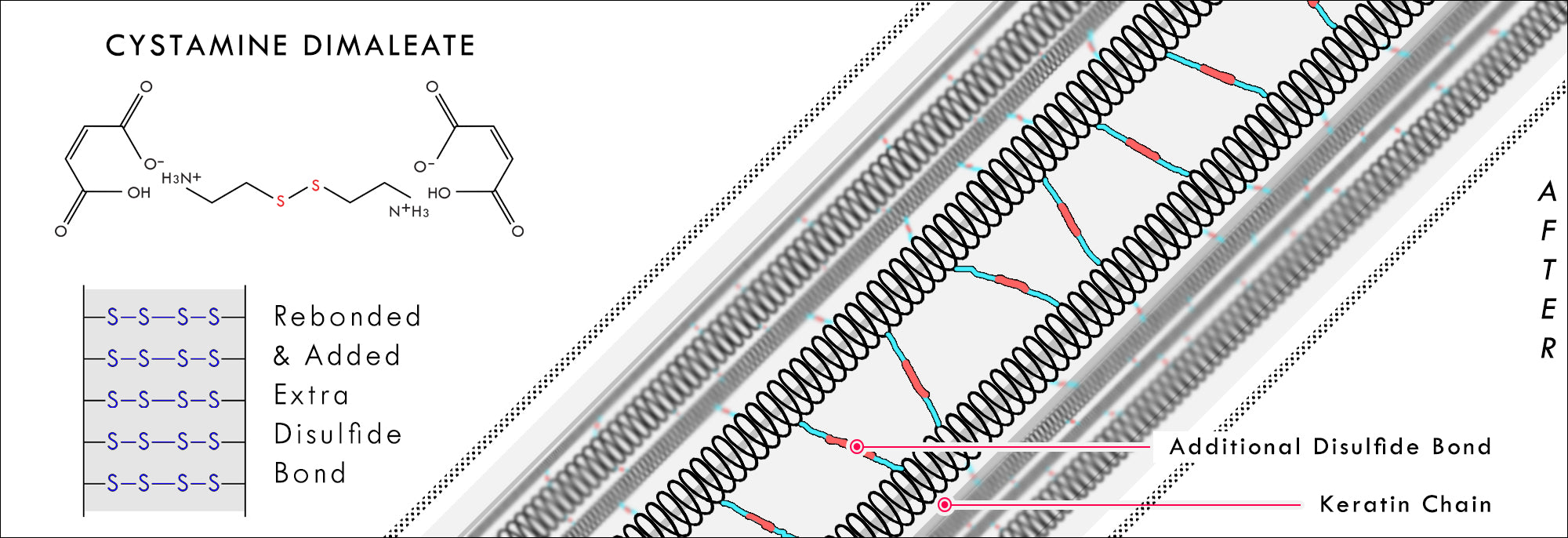
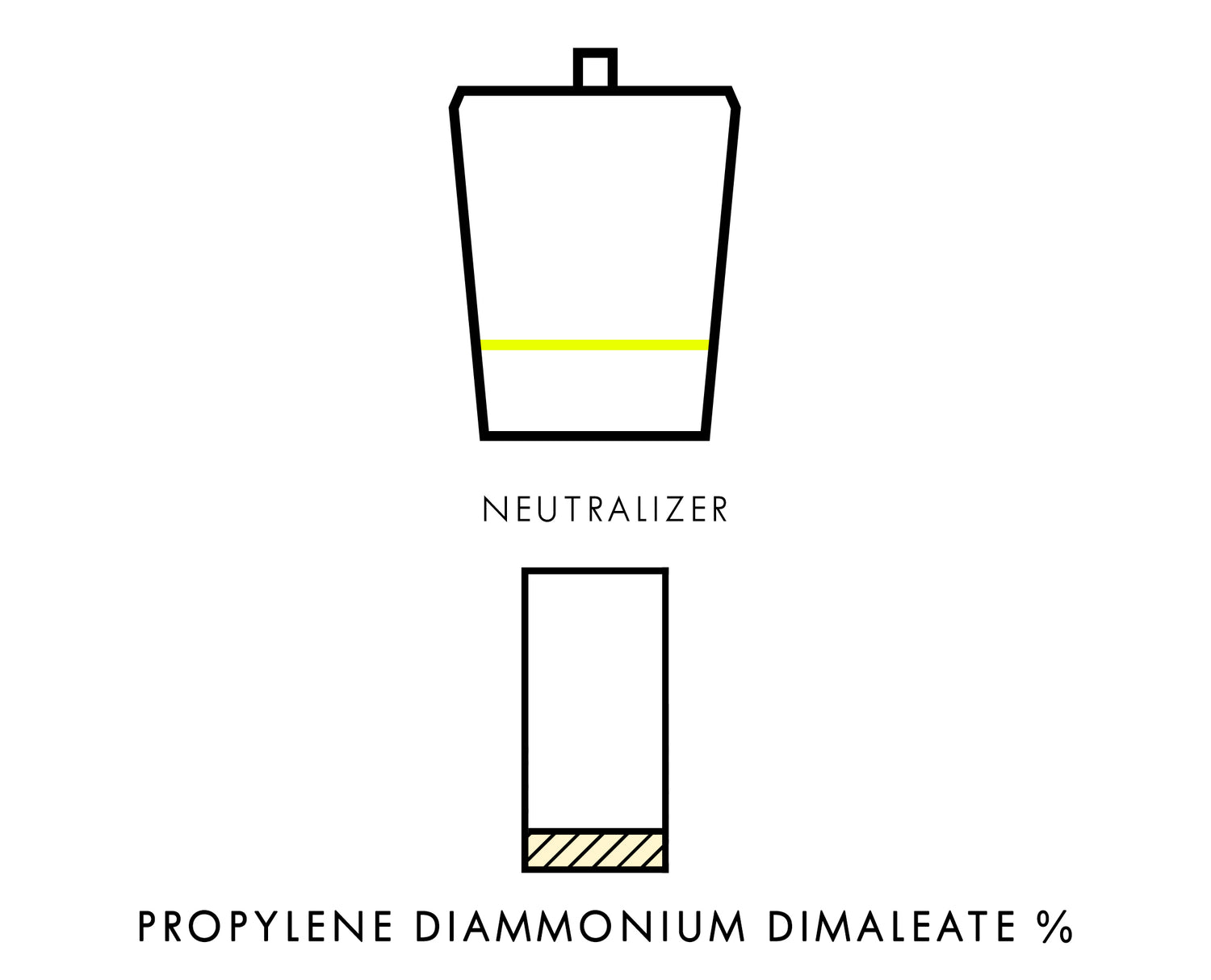
PROPYLENE DIAMMONIUM DIMALEATE
- It has the smallest molecular weight among bonding ingredients and exhibits faster penetration and reaction rates when used.
- Side Reaction (-SR) materials generated by the perm reducing agent are converted to -S-S- through Michael reactions. This process aids in recovering and increasing the sustaining power of the waves.
- Various odorous substances generated during the perm treatment are combined with the double bond (-C=C-) of maleic acid, reducing the residue significantly after the perm by removing the binding.
